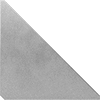Filter by
Fabrication
Material
Diameter
Mechanical Finish
Steel Grade
Tolerance Rating
Outside Width
Wall Thickness
Specifications Met
Hardness Rating
Heat Treatment
Yield Strength
Appearance
Hardness
DFARS Specialty Metals
About Steel
Compare over 50 grades of steel and cast iron to find the right material for you—all with material certificates for traceability.




































































